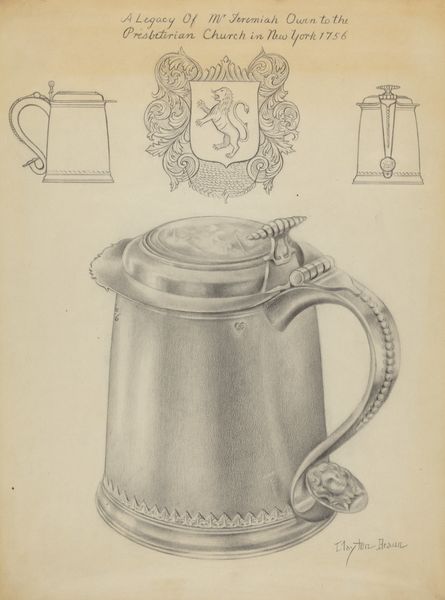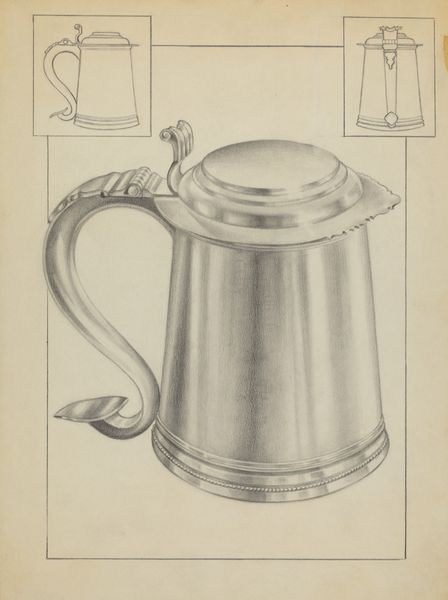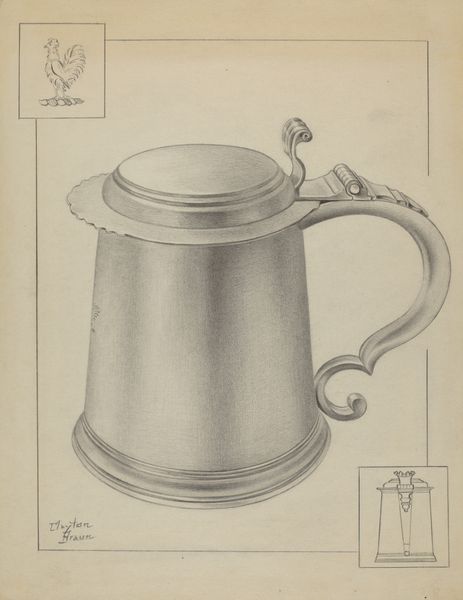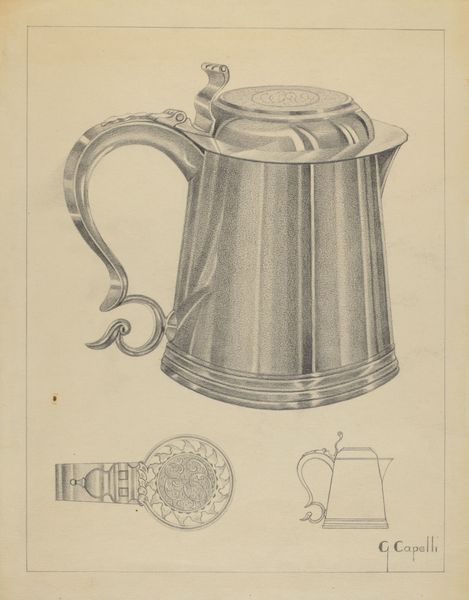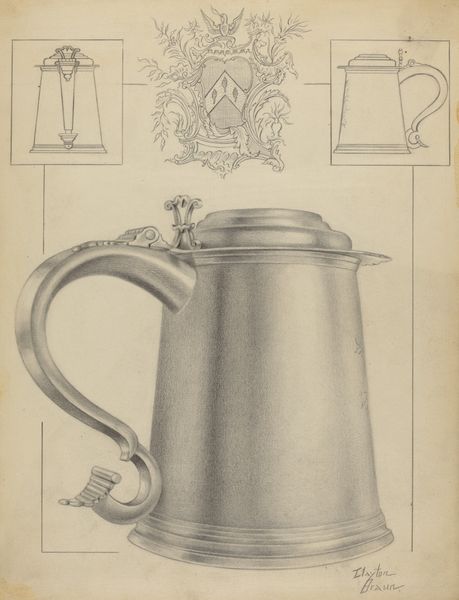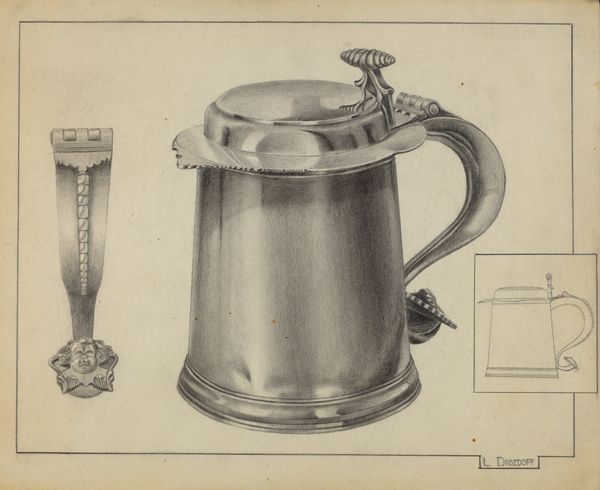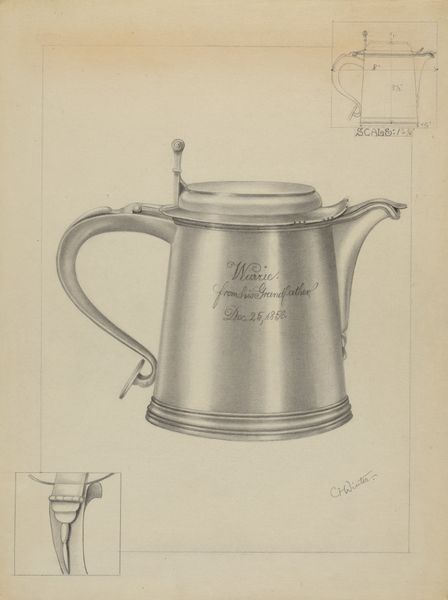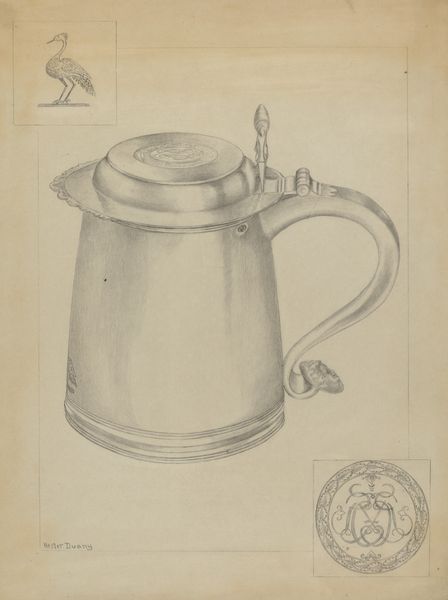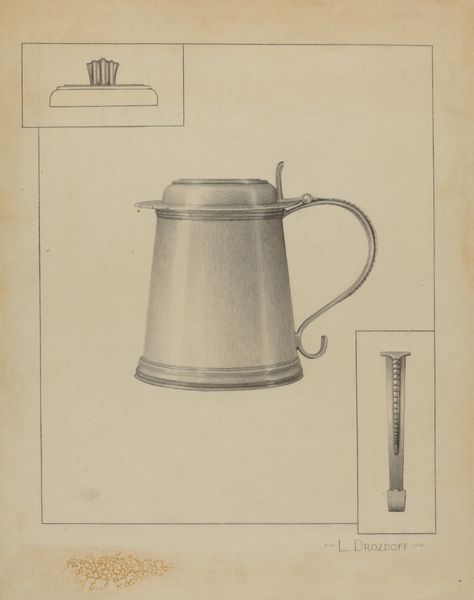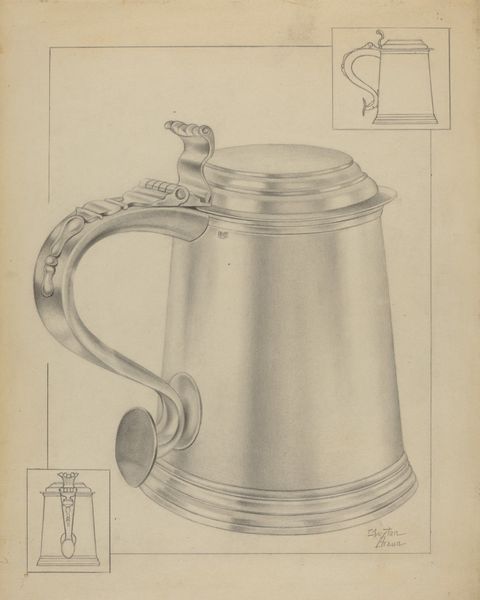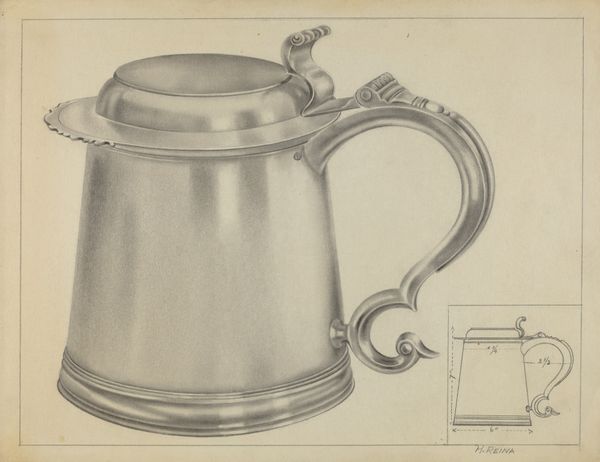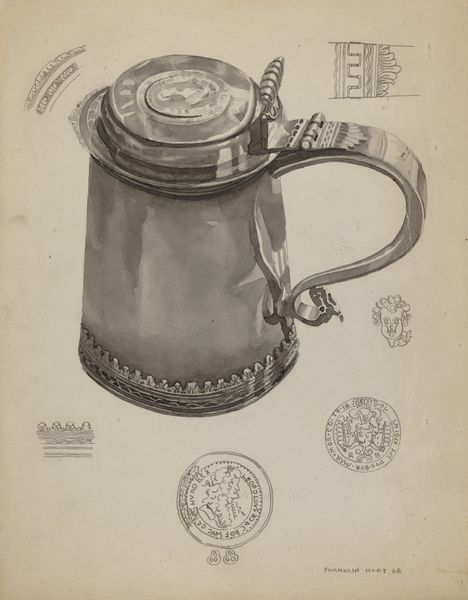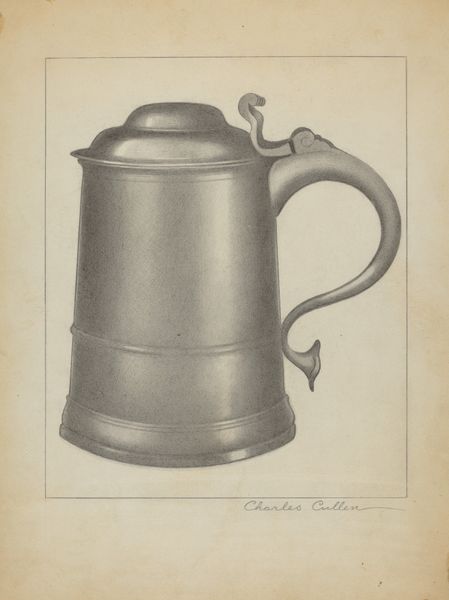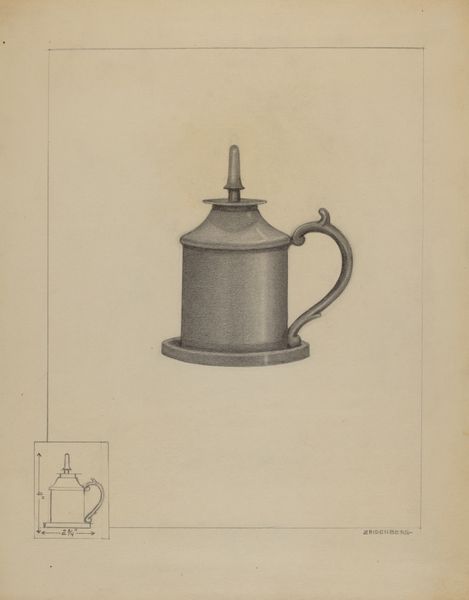
drawing, silver, pencil
#
drawing
#
silver
#
pencil
Dimensions: overall: 29.6 x 22.7 cm (11 5/8 x 8 15/16 in.) Original IAD Object: 7 3/8" high
Copyright: National Gallery of Art: CC0 1.0
Curator: The artwork before us is a pencil drawing entitled "Silver Tankard," created around 1936. The artist is Michael Fenga, and the medium is listed as drawing on silver with pencil. Editor: My first impression is how cold and solid the tankard looks, even in this rendering. The meticulous shading gives a sense of its weighty materiality. Curator: The artist certainly has a dedication to realistically portraying material culture here, seemingly disconnected from the social upheavals occurring in the world at that time. But perhaps it’s a subtle commentary, elevating a functional object to a position of reverence and admiration. What narratives are embedded in everyday things? Who gets to have nice things, who uses them and how do the materials affect the people who access them and the planet at large? Editor: True. But from a formal perspective, notice how Fenga balances the drawing. The detailed tankard at the bottom is grounded by those crisply defined lines. Then there are the lighter sketched details like blueprints or schematic diagrams. Note the central placement of the heraldic emblem above the primary illustration which offers balance, structure and symbolic weight to the whole composition. Curator: That heraldic imagery can definitely be unpacked, too. Who owned this tankard? What are the semiotic legacies encoded in this familial signifier, especially considering it seems to glorify dynastic consolidation? There’s an ethical dimension there, don't you think? Editor: Undoubtedly, those social power structures become literally etched in history through such objects. I appreciate how Fenga uses pencil shading to create highlights, giving the tankard volume, mass, and light. You can almost feel the coolness of the silver! The detailed drawing juxtaposed with the almost airy, schematic renderings creates layers of texture in the drawing. Curator: These objects aren't simply inert; they can reinforce the past. Appreciating form doesn't negate analyzing historical impact and who had or still has access to silver things and what systemic inequalities impact access. Editor: I think a close visual study does help reveal a narrative. Perhaps, appreciating the artistic execution allows one to see the art historical themes through another, closer-focused lens. Curator: Hopefully our perspectives will encourage viewers to approach art not just as aesthetic objects but also as historical actors!
Comments
No comments
Be the first to comment and join the conversation on the ultimate creative platform.
